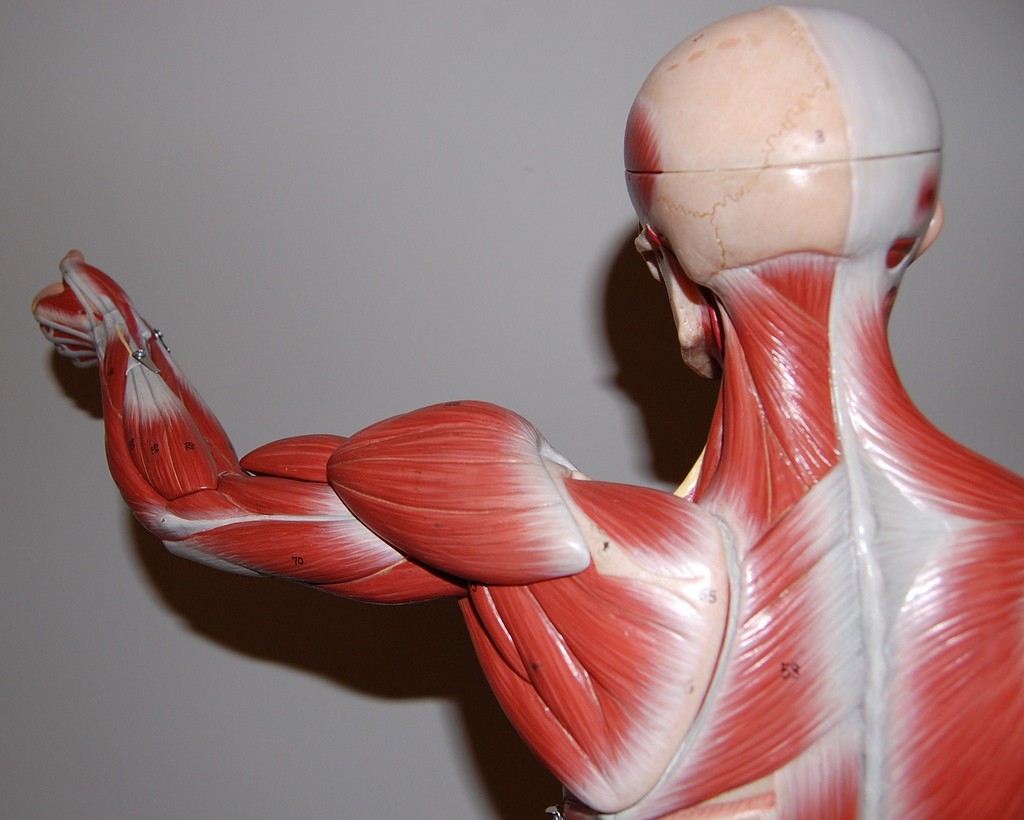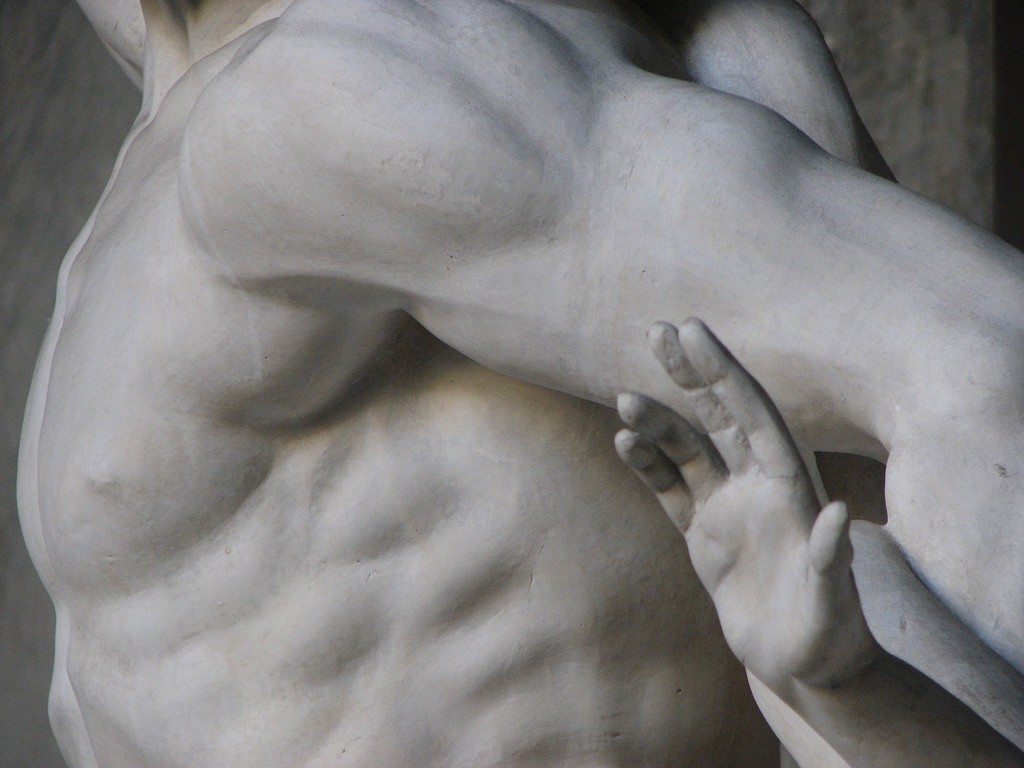Fixing Your Crooked and Broken Posture

I have shitty posture and would very much like to improve it through lifting. What should I be doing? Like obviously, uh, strengthening my back, but I’m having a hard time finding information that is specifically geared towards improving posture.
Thanks, you are a great American hero. — Paula
I suspect a lot of people who want to get into exercise want to improve their posture, because so many of us now spend our lives slowly wasting away in front of computers and tablets and phones. And then I get particularly annoyed because women get VERY STRONG messaging about how the “best” ways to improve posture are through like, yoga, or ballet. And these things will almost certainly work for people. But lifting will work better faster — like weeks or months instead of years — because it starts off intense and you can add intensity quickly as a beginner by incrementally adding weight every workout to the same movements you already know how to do. Everyone is always like “ballerinas — such great posture!” But lifters have great posture too, and I don’t know why they get credit for it. Oh wait, yeah I do.
I think the perception of lifting is that it’s some kind of overkill, exercise-wise, and people think like, oh I just need something light or easy. But light and easy takes for ev-er to get results. Lifting is not a greater time commitment than most exercise, but its particular kind of intensity translates very well and quickly to normal body movements — leaning over and reaching for something, sitting in chairs, bending down to pick stuff up — and you feel it very fast. Do your deadlifts, and your grip will allow you to open every jar. You don’t have to lift a lot of weight to feel its benefits, and you can almost certainly lift a lot more weight than you think with only a few months of training.
I think lifting also gets undersold on development of flexibility. A lot of people picture the typical weight-lifter as a muscle-bound dude who has spent so much time benching that his chesticles and lats are so tight his shoulders are fully internally rotated, and he walks around like a gorilla. But doing lifting correctly and sustainably actually involves a fair amount of flexibility and mobility. Mobility is extremely trendy with lifters right now, and good lifters are not only strong but flexible enough to do movements like squatting below parallel or pressing a barbell overhead without having to crank your back backwards to compensate for tight shoulders.
I’m not a doctor or certified anything, so ask those people before you act on anything I say, but posture can be informed by many things, including muscle tightness or imbalances as well as muscle weakness. Does your pelvis tilt? Do your shoulders round? Do you, like me, tend to shift more weight onto one hip when standing or sitting? Some of this stuff will be resolved more so by the flexibility/mobility required by lifting through stretching, doing yoga-like stuff, or even physical therapy, depending on the severity of your problem, rather than the strength-building itself. But they go well hand in hand.

Your body is a complex and beautiful thing and it has all these crazy sheets of muscle attaching across reaches of your body. For instance, we may think of trapezius muscles as “those lumps next to your neck for which men do shrugs to make them high and tight so their shoulders look big and necks look short and thick”, but did you know they actually extend halfway down and across the center of your back? Did you know your lats, which we think of as “those lumps right below our shoulder blades slash armpits”, actually attach at your hips and along most of your spine on one end, right to the ass-end of it, and then almost halfway down your goddamn upper arm on the other end? Lats are huge! Did you know your pecs, the aforementioned chesticles, attach at your upper arm bones? Did you know one of your quadriceps muscles (to most people, vaguely, “the front thigh”) attaches from within your hip to below your kneecap?! So many things go so many places you wouldn’t think, such that a problem you may think is localized to a particular small area may actually be from a muscle or tendon you may not have guessed went all the way Over There.
Bodies are cool as fuck. But this illustrates a problem with the way we are taught or cultured to think about fitness, and especially strength training, which is usually targeting discrete areas by using machines or light weights for small muscles — dumbbell curls, tricep pushdowns, the godforsaken ab crunch machines. I forgive newbs doing this stuff because it feels easy to understand in an environment that can be overwhelming. While these exercises can target weaknesses or aesthetics in the more advanced lifter, they are an overall bad way of thinking about fitness for beginners because they are not compound movements (e.g., squat, bench, deadlift).
This is all a very roundabout way of saying: trying to self-diagnose a local problem and treat it with specific lifts or specific mobility may not get you very far. You may be like, “my shoulders are hunched so I should do shoulder exercises,” or “my lower back hurts, so I should do lower back exercises,” when lots of things can hunch your shoulders that are not your shoulders, and lots of things can make your lower back hurt that are not your lower back muscles. You can do all the back work in the world but if you have, say, tight hip flexors or hamstrings, your pelvis will still be pulled out of alignment and your posture will still be “bad”; ditto the rounded shoulders from chest or lat tightness from earlier (these aren’t comprehensive fixes, but just examples).

You will be far better off using your body holistically, because it wants to be used that way. You can’t really meaningfully isolate any part of it, especially as a beginner, and trying to do so could actually make things worse. Looking at a map of a body’s muscles, you can see the importance of a) a lifting program that uses free weights like barbells and dumbbells to work muscles as they are designed to be used — together, in union — because the body is complex and made to pick things up and push and pull things around with muscle groups rather than, for instance, swinging gently through a controlled motion that works one muscle at a time, as with machines, and b) requires maintaining a decent level of mobility across those muscle groups to keep using them correctly, once they start to get stronger.
It’s hard to know how to fix your specific posture issues without knowing more about them (and I’m really not qualified for that anyway), but again I think you’d have a hard time finding a person whose posture didn’t improve, and quickly, through a basic lifting program and the attendant stretching and mobility required to do the movements correctly. These programs do require some prep, but probably less than you think. Simple beginner programs usually involve only a few movements, but almost all of them work your back and core in some capacity, which will translate well to your posture. The tightness required in squats and deadlifts work your back and core; rows, pull-ups, and bench all work your back (and that’s literally all there is to Starting Strength and StrongLifts). There are likewise basic stretching programs that are great for recovery and will help you maintain or gain mobility as your gain strength. Agile 8, Limber 11, and Starting Stretching are some popular ones. The book Becoming A Supple Leopard is also extremely popular for reading up on mobility.


Should I do GOMAD? — Leah
I think Leah is joking, but Leah — I take you very seriously. GOMAD, or “gallon of milk a day,” is a hard-gaining method of increasing your caloric intake by drinking a gallon of milk each day in addition to eating all your food for nutrients. As we’ve discussed before, liquids are a good way of putting down some easy calories if you’re otherwise eating a balanced diet. We’ve talked a bit before about intentionally gaining weight for the purpose of cultivating muscle, or bulking. It’s not something you’d do necessarily if you’re new to lifting, but once you’ve run through your beginner gains period, taking in a surplus of calories will allow you to keep gaining (10–20% over your daily energy expenditure is typical).
You also might do something like GOMAD do it if you’re new to lifting, you struggle to eat a lot, already have very low body fat, and don’t care if you put on a little excess fat. In my opinion, in that case, you should not care, because fat will be easy to lose with the new muscle you have built. Worth noting that GOMAD isn’t a lifestyle; you’d probably do it for a month or so to get the ol’ metabolic engines cranking and then scale back, or start eating real food, or something.
A gallon of milk is 2400 calories (and 128g protein, yum), way more than any woman’s normal bulking caloric margin. It’s aggressive, and I’m not your doctor, but if your doctor is certain it won’t kill you and you’re down to gain some weight and build some muscle through lifting, GOMAD sounds like fun (I love milk, personally). You could probably ramp your milk intake up slowly per this StrongLifts page, or do half-GOMAD, even, and see some pretty good results. So yes, Leah, in my opinion, with safety and health issues accounted for and if it fits your gaining goals, you should definitely do GOMAD.
Got a question for A Swole Woman? Email [email protected]. You can also follow her on Instagram.